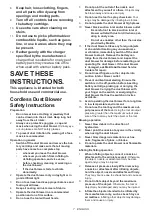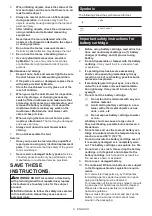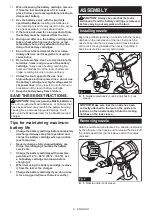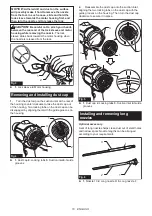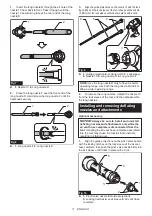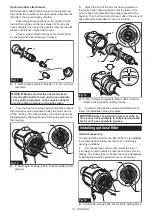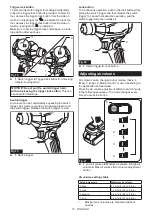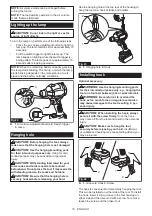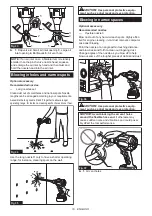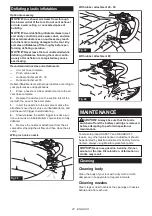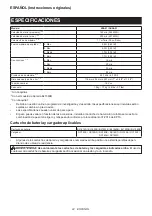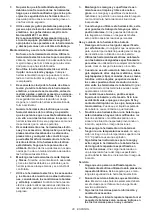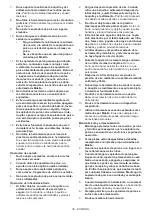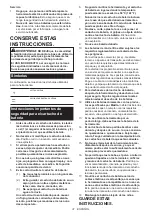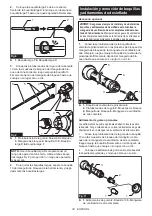
20 ENGLISH
Deflating plastic inflatables
Optional accessory
NOTICE:
An exhaust air stream flows through
the blower outlet of the tool. Do not vent exhaust
air into a wall, ceiling, or concealed space of
building.
NOTICE:
Avoid deflating inflatable items in wet
and dusty conditions since water, dust, and sim-
ilar external substances on surfaces may reach
into the motor causing damages to the tool. Dry
and clean inflatables off thoroughly before per
-
forming deflating operation.
NOTICE:
Never leave the tool unattended while
deflating inflatables. Running the motor contin
-
uously after deflation is completed may cause
overheating.
Recommended nozzles and attachments
—
Air vent hose complete
—
Pinch valve nozzle
—
Rubber attachment
20 - 30
—
Rubber attachment
65
Deflate inflatable items with proper nozzles according to
your preferences and applications.
1.
Place a nozzle or rubber attachment onto the air
vent hose complete.
2.
Replace the dust cap on the suction inlet of the
tool with the air vent hose complete.
3.
Insert the nozzle into the air valve or place the
attachment over the air valve on inflatable items, and
pull the switch trigger to start deflating.
4.
Slowly release the switch trigger to reduce suc
-
tion volume as an inflatable item comes close to fully
deflated.
5.
Remove the nozzle or attachment from the air
valve after stopping the air flow and then close the air
valve.
With pinch valve nozzle
Fig.38
With rubber attachment 20 - 30
Fig.39
With rubber attachment 65
Fig.40
MAINTENANCE
CAUTION:
Always be sure that the tool is
switched off and the battery cartridge is removed
before attempting to perform inspection or
maintenance.
To maintain product SAFETY and RELIABILITY,
repairs, any other maintenance or adjustment should
be performed by Makita Authorized or Factory Service
Centers, always using Makita replacement parts.
NOTICE:
Never use gasoline, benzine, thinner,
alcohol or the like. Discoloration, deformation or
cracks may result.
Cleaning
Cleaning body
Clean the body of your tool with a dry cloth or cloth
dampened in soapy water at regular intervals.
Cleaning nozzles
Clear clogs or dust that block the openings of nozzles
before and after each use.


